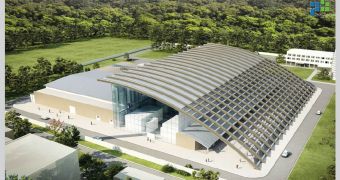Of all the ideas that are born every day, only a scant few ever blossom into something extraordinary. The one that the European Union wants to foster is that of a super laser.
The EU doesn't actually call its project that. One might even say that what it is looking into is not even a “super” laser at all.
Still, it is the most powerful laser ever created, which is the closest thing to a super laser that someone could ask for.
Called Extreme Light, it will be built in the Czech Republic and Romania, according to a spokesperson for the European Commission on regional policy. A third research center will be built in Hungary.
The full sum that will go into the project is $900 million, or around 700 million Euro.
The Romanian laser will be located at the Magurele research center and will consume as much energy as it takes to supply 2,500 average US homes (10 MW of energy). Massive geothermal pumps will produce it.
Laser-based nuclear physics will be the focus here, where “an intense gamma-ray source is foreseen by coupling a high-energy particle accelerator to a high-power laser.”
The center in the Czech Republic, Prague, will use compact laser plasma accelerators to provide users with ultra-short energetic particle (10 GeV) and radiation (up to few MeV) beams.
Finally, the Hungary, Szeged facility will take snapshots of electron dynamics at the attosecond scale (a billionth of a billionth of second), among other things.
Overall, the purpose of the Extreme Light initiative is to build one or two lasers that are 10 times more powerful than the mightiest already in existence. They will be powerful enough to create subatomic particles in vacuum and, supporters hope, sufficient to deteriorate nuclear waste radioactivity in a matter of seconds. The same principle could be used to combat cancerous tumors.
Romanian coordinator Nicolae-Victor Zamfir hopes to have the first results within 1-2 years after the centers become operational in 2017.

 14 DAY TRIAL //
14 DAY TRIAL //